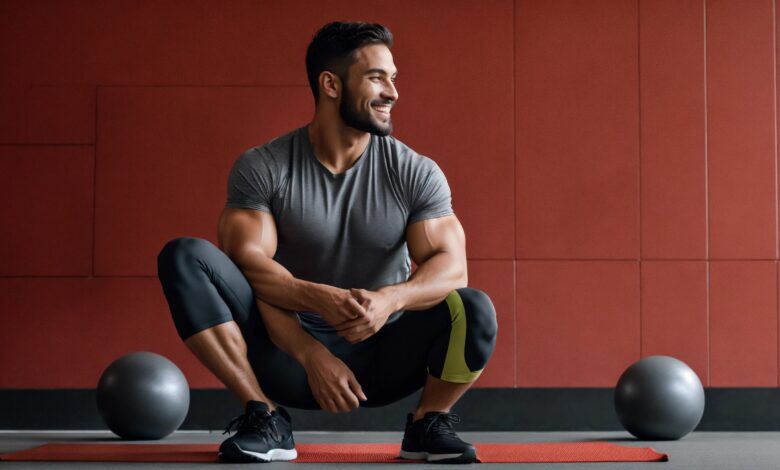From Beginner to Champion: Designing Your Boxing Muscle Building Program

Boxing is not just about speed and agility; it also requires strength and power. A well-structured muscle-building program can elevate your performance in the ring, taking you from a beginner to a champion. For those looking to train effectively, finding the right environment is crucial. If you’re in Texas, exploring the Best Gyms in Houston can provide you with access to the best facilities and trainers to kickstart your boxing journey. In this article, we will explore how to design a comprehensive boxing muscle-building program that addresses strength, endurance, and skill development.
Understanding the Basics of Boxing and Muscle Building
Before diving into the program, it’s essential to understand the unique demands that boxing places on your body. Unlike traditional bodybuilding, which focuses solely on hypertrophy (muscle size), boxing requires a combination of strength, power, and muscular endurance. Here are some key elements to consider:
1. Strength and Power
Strength in boxing is not just about lifting heavy weights; it’s about converting that strength into explosive power. This power enables you to throw punches with speed and force. Compound exercises like deadlifts, squats, and bench presses should be the cornerstone of your strength training regimen.
2. Muscular Endurance
Muscular endurance is crucial in boxing, as fights can last several rounds. You need your muscles to sustain high-intensity activity without tiring. This involves high-repetition weight training and cardiovascular conditioning.
3. Flexibility and Mobility
Flexibility and mobility are often overlooked but are vital for effective movement and injury prevention. Incorporate dynamic stretching and mobility drills into your routine.
Structuring Your Boxing Muscle Building Program
Creating a muscle-building program for boxing involves a combination of strength training, endurance work, and skill practice. Here’s a step-by-step guide to designing your own program:
1. Set Clear Goals
Your goals will shape your program. Are you looking to build maximum muscle mass, increase punching power, or improve endurance? Define your objectives clearly to tailor your training.
2. Periodization
Periodization involves breaking down your training into phases, each with a specific focus. For a boxer, a typical periodization model might include:
- Preparation Phase (4-6 weeks): Focus on building a base level of strength and endurance.
- Strength Phase (4-6 weeks): Increase overall strength and power through heavy lifting.
- Power Phase (4-6 weeks): Transition to more explosive movements and powerlifting techniques.
- Peaking Phase (2-4 weeks): Fine-tune your training to peak performance, including sparring and high-intensity conditioning.
3. Strength Training Exercises
Incorporate compound movements to build functional strength. Here’s a sample list of exercises:
- Squats: Essential for leg strength and explosive power.
- Deadlifts: Develops overall body strength and stability.
- Bench Press: Increases upper body strength and punching power.
- Pull-Ups: Builds back strength, important for punch retraction.
- Overhead Press: Enhances shoulder strength and stability.
Aim for 3-5 sets of 4-8 repetitions for strength-focused exercises.
4. Power Training
Power is the ability to exert maximum force in a short amount of time. Incorporate plyometric exercises like:
- Medicine Ball Throws: Mimics the explosive motion of a punch.
- Plyometric Push-Ups: Enhances upper body power.
- Box Jumps: Improves lower body explosiveness.
Perform 3-4 sets of 6-10 repetitions for power exercises.
5. Endurance and Conditioning
Boxers need to maintain energy levels throughout a match. Include the following:
- High-Intensity Interval Training (HIIT): Short bursts of high-intensity exercise followed by rest, simulating the demands of a boxing round.
- Long-Distance Running: Builds aerobic base and improves stamina.
- Jump Rope: Enhances footwork and cardiovascular endurance.
Incorporate endurance training 2-3 times per week, focusing on both aerobic and anaerobic systems.
6. Boxing-Specific Drills
Integrate boxing drills to combine muscle building with skill development:
- Heavy Bag Work: Practice power punches and combinations.
- Speed Bag: Improves hand-eye coordination and shoulder endurance.
- Shadow Boxing: Focus on technique, footwork, and movement.
7. Flexibility and Recovery
Flexibility and recovery are crucial to prevent injuries and optimize performance. Include:
- Dynamic Stretching: Before workouts to prepare the muscles.
- Static Stretching: After workouts to improve flexibility.
- Foam Rolling and Massage: To relieve muscle tension and promote recovery.
Sample Weekly Training Program
Here’s a sample weekly plan to get you started:
Monday: Strength Training
- Squats: 4 sets of 6 reps
- Deadlifts: 4 sets of 6 reps
- Bench Press: 4 sets of 6 reps
- Pull-Ups: 3 sets of 8 reps
- Core Work (Planks, Russian Twists): 3 sets
Tuesday: Conditioning and Boxing Drills
- HIIT Circuit (5 rounds): 30 seconds of sprints, 30 seconds rest
- Heavy Bag Work: 5 rounds of 3 minutes
- Speed Bag: 3 rounds of 2 minutes
- Jump Rope: 10 minutes
Wednesday: Rest and Recovery
- Light Jog or Active Recovery: 20 minutes
- Dynamic Stretching: 15 minutes
- Foam Rolling: 10 minutes
Thursday: Power and Explosive Training
- Medicine Ball Slams: 4 sets of 10 reps
- Plyometric Push-Ups: 4 sets of 8 reps
- Box Jumps: 4 sets of 6 reps
- Heavy Bag Power Punches: 5 rounds of 2 minutes
Friday: Strength and Skill Integration
- Overhead Press: 4 sets of 6 reps
- Pull-Ups: 4 sets of 8 reps
- Speed Bag: 5 rounds of 2 minutes
- Shadow Boxing with Focus on Power: 4 rounds of 3 minutes
Saturday: Long-Distance Run and Light Sparring
- Long-Distance Run: 5-8 miles at a steady pace
- Light Sparring or Technical Drills: 6 rounds of 3 minutes
Sunday: Active Rest and Mobility
- Light Yoga or Stretching: 30 minutes
- Core Work (Leg Raises, Bicycle Crunches): 3 sets
- Meditation and Breathing Exercises: 15 minutes
Nutrition and Supplementation
To maximize your muscle-building and performance, nutrition is key. Here are some guidelines:
1. Protein Intake
Aim for 1.2 to 1.7 grams of protein per kilogram of body weight daily. Include sources like lean meats, fish, eggs, and plant-based proteins.
2. Carbohydrates for Energy
Carbohydrates are your main energy source. Choose complex carbs like oats, brown rice, and sweet potatoes to fuel your workouts.
3. Healthy Fats
Include healthy fats from sources like avocados, nuts, and olive oil. Fats are essential for hormone production and recovery.
4. Hydration
Stay hydrated to maintain performance and recovery. Aim for at least 3 liters of water daily, more if you’re training intensely.
5. Supplements
While not necessary, supplements can enhance your performance. Consider:
- Whey Protein: For post-workout recovery.
- Creatine: To increase power and strength.
- BCAAs: For muscle recovery and endurance.
- Electrolytes: To maintain hydration during intense sessions.
Staying Consistent and Tracking Progress
Consistency is crucial in any training program. Track your workouts, note your strengths and weaknesses, and adjust your program as needed. Consider working with a coach or trainer to refine your technique and strategy.
Conclusion
Designing an effective boxing muscle-building program involves a careful balance of strength training, endurance work, and skill development. Whether you’re just starting or looking to enhance your performance, this program can serve as a foundation for your boxing journey. And remember, the environment in which you train can significantly impact your progress. If you’re in Texas, make sure to explore the Best Gyms in Houston to find a facility that aligns with your goals. With dedication and the right approach, you can transform from a beginner into a champion in the ring.




